<< Previous | Displaying results 31-40 of 457 for "jewish prisoners" | Next >>
Between 1941 and 1943, underground resistance movements developed in about 100 Jewish ghettos in Nazi-occupied eastern Europe. Their main goals were to organize uprisings, break out of the ghettos, and join partisan units in the fight against the Germans. The Jews knew that uprisings would not stop the Germans and that only a handful of fighters would succeed in escaping to join with partisans. Still, Jews made the decision to resist. Further, under the most adverse conditions, Jewish prisoners succeeded…

Yitzhak Gitterman was a director of the American Jewish Joint Distribution Committee in Poland and a member of the underground Jewish Fighting Organization.
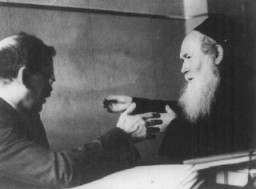
Under the most adverse conditions, prisoners initiated revolts in killing centers. Learn more about prisoner uprisings in Treblinka, Sobibor, and Auschwitz.

1943 still life of a violin and sheet of music behind prison bars by Bedrich Fritta (1909–1945). Fritta was a Czech Jewish artist who created drawings and paintings depicting conditions in the Theresienstadt camp-ghetto. He was deported to Auschwitz in October 1944; he died there a week after his arrival.
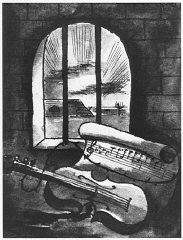
Groups of prisoners known as Sonderkommandos were forced to perform a variety of duties in the Nazi camp system, including in the gas chambers and crematoria.
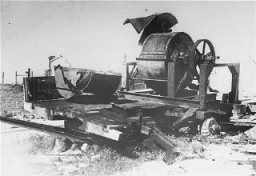
Wilek was the son of Jewish parents living in the southeastern Polish town of Lvov. His family owned and operated a winery that had been in family hands since 1870. Wilek's father died of a heart attack in 1929. Wilek entered secondary school in 1939. Soon after he began school, World War II began with the German invasion of Poland. Lvov was in the part of eastern Poland annexed by the Soviet Union. Although the Soviets took over Wilek's home and the family business, Wilek was able to continue his…

The Germans and their collaborators used paper records and local knowledge to identify Jews to be rounded up or killed during the Holocaust.

After the Nazi rise to power in 1933, the German system of justice underwent "coordination" (alignment with Nazi goals). Learn more about law and justice in the Third Reich.
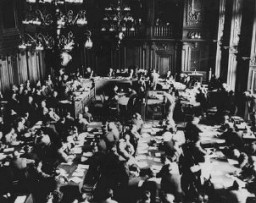
Learn how the "First Letter to all Judges" increased the pressure on German judges to give verdicts and sentences according to Nazi principles and ideology.
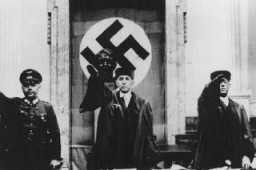
We would like to thank Crown Family Philanthropies, Abe and Ida Cooper Foundation, the Claims Conference, EVZ, and BMF for supporting the ongoing work to create content and resources for the Holocaust Encyclopedia. View the list of donor acknowledgement.